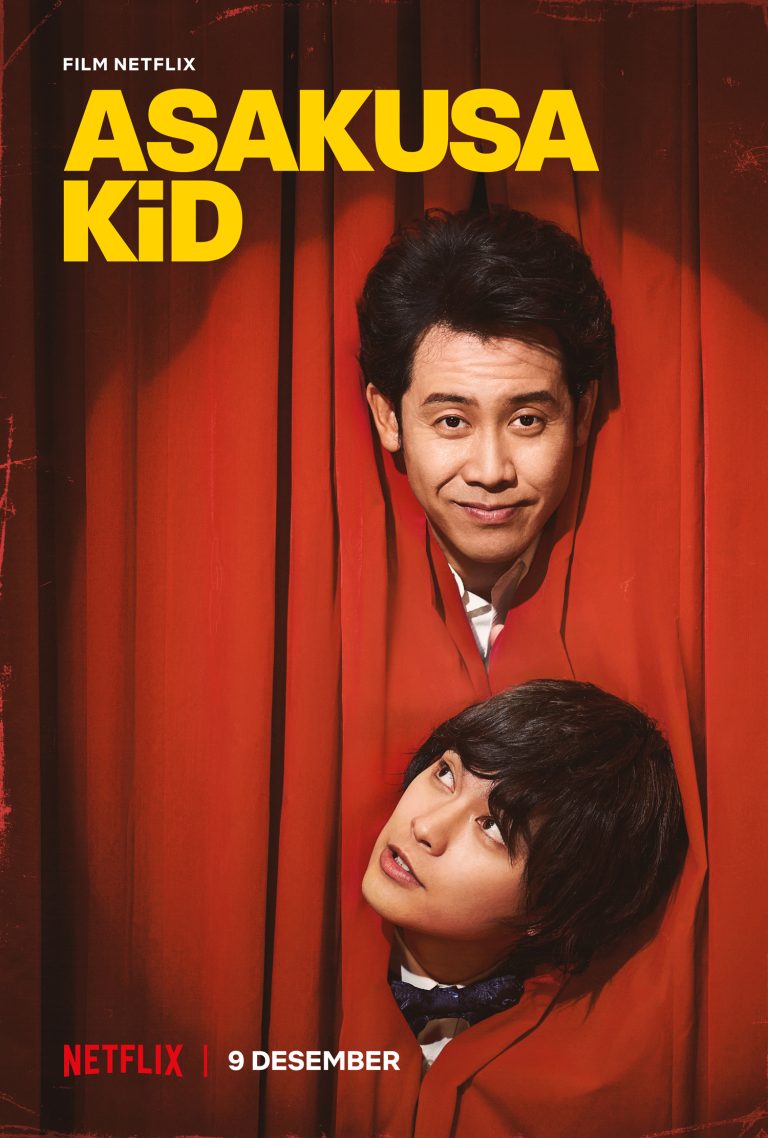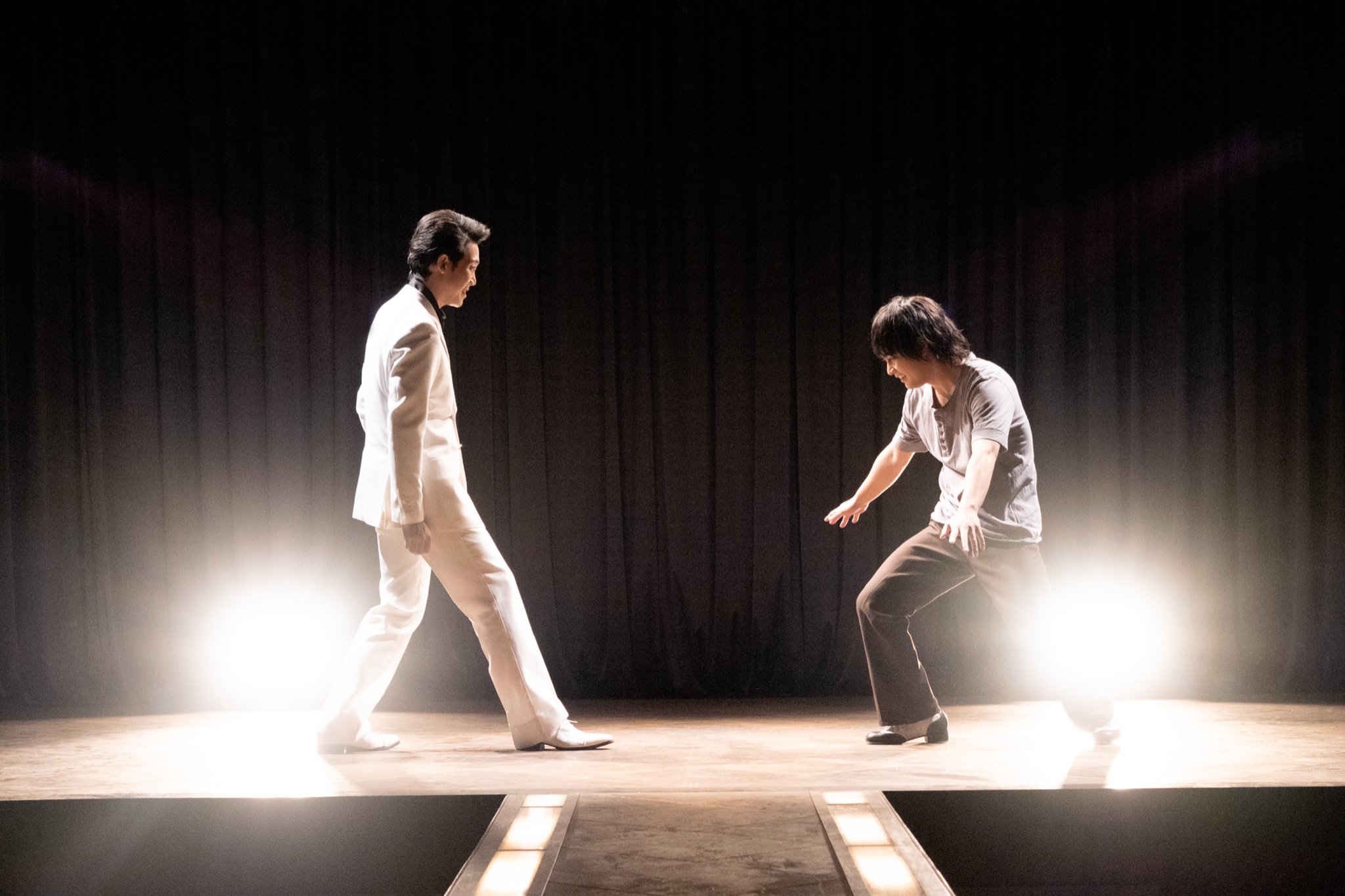
Gekidan Hitori’s Asakusa Kid is shot in Japan and retraces the life of Takeshi Kitano and his first experiences as a comedian of “Beat.” Considered one of the most important living oriental directors for his peculiar style and the originality of his cinema, this biopic is based on Kitano’s autobiography. Through a series of insightful flashbacks, the movie chronicles the artist’s coming-of-age story.
The story is set in Tokyo, in the Asakusa district of 1972, when the insecure Takeshi Kitano (played very well by Yûya Yagira), who experiences anxiety twitching, begins a long apprenticeship with the master of laughter Senzaburo Fukami (Yô Ôizumi). As he thrives in his craft, the young performer eventually shines of his own light.
Takeshi moves his first comedic steps in a strip theatre called Asakusa France-za. He is initially a hand-man or “elevator boy” in this venue that is close to bankruptcy, in which the interludes between the strippers’ performances are enlivened by comic sketches. The audience is plunged into the gaudy community of this club, formed by aspiring singer Chiharu (Mugi Kadowaki) and the other strippers, Fukami and his colleagues, Mari (Honami Suzuki) — the patient wife of the idealist comedian — and the adorable doorwoman who stuffs Take with sweets and oranges.
Within this setting, Takeshi manages to persuade the great Fukami, who is very critical towards his colleagues who “sold out” to television, to make him his apprentice. The young Asakusa Kid learns quickly, and his opportunity to perform on stage comes when he has to replace Fukami’s collaborator just a few minutes before a show. Take unleashes his improvisational skills to support his teacher in a skit. In that moment, a comedian is born.
However, the live shows in which Takeshi specialises, gradually begin to have little appeal for the public, that is shifting its attention towards another form of entertainment: the Manzai genre. This is the traditional Japanese stand up comedy, where a Tsukkomi (straight man), and a Boke (funny guy), exchange high-speed back-and-forth banter.

At this point, Take, is forced to make a difficult decision and walk with his own two feet away from his teacher’s ideas, to test himself on the small screen. Two Beat is the duo that launches Takeshi Kitano and his business partner Kiyoshi Kaneko (Nobuyuki Tsuchiya) to prominence. Together they revolutionise the Manzai genre, changing its rhythm and themes and drawing inspiration from the subversive, critical and ruthless monologues of the idol of the young Kitano, the legendary American comedian Lenny Bruce. Whilst Kiyoshi played the tsukkomi and Takeshi was the boke, one could say they were the Japanese Dean Martin and Jerry Lewis of their times.
What followed was worldwide stardom. The famous television program Takeshi’s Castle was aired in countries all over the world, on networks such as FOX and CBS for the USA, Comedy Central in the UK and Italia 1 in Italy, where the show was renamed Mai dire Banzai. It was a global phenomenon.
But Asakusa Kid is not a mere personal memoir, that nostalgically explores reminiscences of career highlights. It is much more. This picture homages human relationships and the passage of time, since Takeshi’s rise coincides with the decline of Fukami, along with theatrical entertainment being annihilated by television.
Thus, the charm of the film, is a trip down memory lane to a world that no longer exists. Along this melancholic journey, we observe a rapport that often gets neglected by cinema: the master-disciple relationship.

Asakusa Kid, portrays the importance of how the more experienced try to bequeath their knowledge to younger generations, and the way students acquire these teachings and utilise them independently from their masters. What is heart-rending about the film is how it reminds that disciples should not set aside their mentors, once they are blessed with success. In fact, when Takeshi Kitano is in his seventies, he thinks back at his inspirational educator and feels again like the hesitant Asakusa Kid, who was placing his first foot in the door of comedy.
In this fashion, the motion picture begins and ends with tap dance, the leitmotiv of the entire story that serves as symbol of an artistic bond between pupil and tutor. The rhythmic sound of the shoes striking the floor, as a form of percussion, become the musical cut of the entire cinematic remembrance of things past.
The film is currently available on Netflix.
Final Grade: B+

